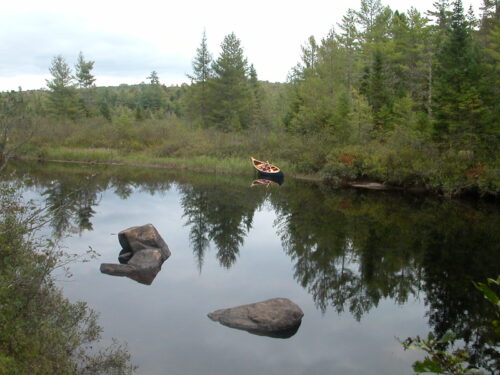I was in such a situation several days ago on the way to a place called Lester Flow. Second growth forest. Good level path, but no trail signs or even markers. No ponds, no hills, no streams, no meadows, no views, no curves, no people. Almost no sound; it’s the end of summer and the birds are molting. I didn’t succumb to the insanity, but after about twenty minutes I recognized the signs. I have this idea that if I understand what’s happening, I can maintain equilibrium.
I became hyper-aware of my surroundings. I took note of the species of trees, the downed branches, the fungi, the subtle rock patterns on the path. I tuned into the remote murmur of a plane far overhead, and the buzzing of dragonflies, and the Black-Capped Chickadees that never completely calm down. Once I heard a Pileated Woodpecker. In this way, I remained conscious of going somewhere, as opposed to merely getting tired. It helped that I’m a fairly fast hiker these days; I arrived at the Flow in less than an hour. I was rewarded with a pretty peaceful scene and a sense of privacy rather than isolation.
The way back was easy, because I memorized the landmarks, such as they were.
I asked myself later, if perhaps this madness that I have no word for – call it forest craze – has been occurring in my life, on a different level. I’ve been discouraged by lack of discernible change in various areas of my life, and while I can’t honestly say I’ve been in a bad place, I have often felt like there’s no opening in the trees.
I doubt I’m the only one who encounters this in their life. It’s not the same as spinning on a hamster wheel: I know I’ve covered some distance, and my sense of direction is good. Perhaps by tuning into subtle changes, a sense of movement can be restored. This is where consciously noticing signs, rather than waiting for them to ambush you, is important.

